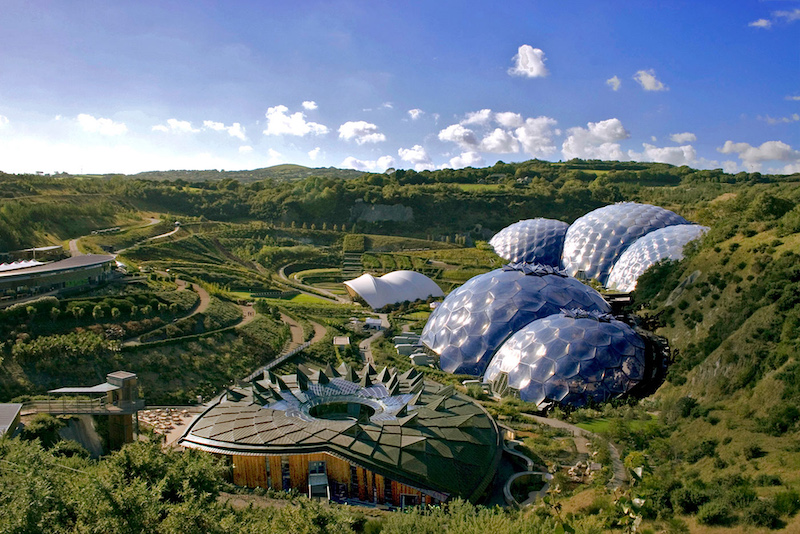Green architecture, often known as sustainable architecture, is a design strategy that aims to reduce a building’s negative environmental consequences while fostering a healthy and happy living environment for inhabitants. Green design is focused on sustainability concepts such as waste reduction, resource conservation, and energy consumption reduction. Green design may assist in unleashing sustainability and foster a more ecologically friendly future by embracing these ideas. Green architecture is unlocking sustainability via inventive design, the use of sustainable materials, and energy-efficient technologies.
Some Advantages of Green Architecture
One of the major advantages of green design is that it may assist to lower a building’s carbon footprint. Buildings contribute significantly to global carbon emissions, owing to the energy used in their construction, operation, and upkeep. The green design aims to reduce greenhouse gas emissions by lowering energy use, increasing energy efficiency, and incorporating renewable energy sources such as solar panels and wind turbines. The green design may assist in alleviating the impacts of climate change and create a more sustainable future by lowering the carbon footprint of buildings.
Another advantage of green building is that it encourages resource efficiency. Older structures are frequently built using non-sustainable materials, such as concrete and steel, which take a lot of energy to generate. Green architecture, on the other hand, makes use of sustainable materials such as lumber and bamboo, which take less energy to manufacture and may be derived from renewable resources. The green design may also encourage using recycled materials, such as recovered wood or recycled steel, to help decrease waste and save resources.



Older buildings are often constructed with substances containing unsafe substances, which include volatile organic compounds (VOCs), which may be harmful to human health. Conscious Green Building Design employs non-toxic and chemical-free substances, that could offer healthy surroundings. Natural ventilation, for an instance, can serve to decorate interior air excellently and decrease the call for air-conditioning in construction.
One of the fundamental ideas of green architecture is to encourage a symbiotic interaction between buildings and their surroundings. The green design strives to reduce the influence of buildings on the natural environment while encouraging architectural integration with the surrounding ecosystem. Green roofs, for example, can serve to lessen the urban heat island effect, offer insulation, and encourage biodiversity. Green design can also include elements like rainwater harvesting, which can assist to preserve water and relieve pressure on the municipal water supply. Green architecture may also enhance social sustainability by designing buildings that are open, welcoming, and encourage social interaction.
Barrier-free design, which makes buildings more accessible to individuals with disabilities, and community spaces, which foster social interaction and a feeling of community, are examples of such characteristics. Green architecture can also include amenities like natural lighting, which can make residents feel more welcome and comfortable. One example of green architecture is the Bullitt Center in Seattle, Washington. The Bullitt Center is a net-zero energy building, which means it produces as much energy as it consumes. It incorporates many sustainable features, including rainwater harvesting, solar panels, and geothermal heating and cooling. The building also incorporates a unique design, with a sawtooth roof that allows for natural lighting and a striking facade that includes wood panels and large windows. The Bullitt Center has been praised for its innovative design and sustainable features, and it serves as a model for green architecture around the world.
Drawbacks of Green Architecture
Green architecture is a building design strategy that promotes sustainability and energy efficiency. Yet, there are some disadvantages to consider. One significant concern is cost, as green buildings sometimes require specialised materials and equipment and can be more difficult to construct. Furthermore, many of the energy-saving measures of green buildings need an initial investment that may take many years to repay via energy savings. Another issue is the continual care and upkeep necessary for many of the materials and features found in green buildings, which can be time-consuming and costly.
Another problem is that adding green elements to specific areas or types of buildings might be challenging. In heavily populated metropolitan areas, for example, space restrictions may limit the use of green roofs or solar panels. Certain buildings, such as historic ones, may be challenging to adapt to green elements without affecting the architectural integrity.
Despite these obstacles, green design continues to be an essential means of promoting sustainability and combating climate change. It is feasible to save expenses, assure effective maintenance, and develop green structures that are appropriate for their size and function by collaborating with skilled architects and designers. Several of these obstacles are expected to be solved as green design evolves, giving sustainable architecture a more available and affordable alternative in the future.




